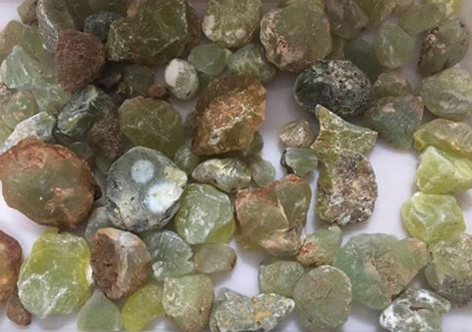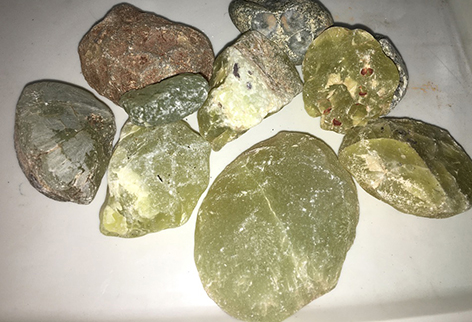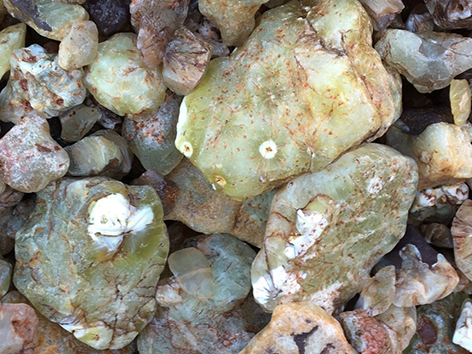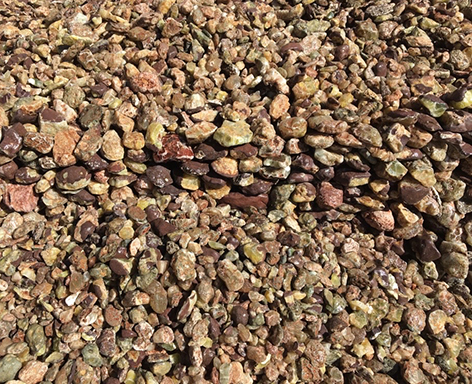PREHNITE
The Stone of Dreaming
According to Metaphysical Healers prehnite is a stone of Unconditional Love.
It invites protection and peace, supports personal discipline. Prehnite is said to teach one how to be in harmony with nature and elemental forces.
It is said to provide inspiration to realise one's dreams and aspirations. Prehnite is known as The Stone of Dreaming because it is said to alleviate phobias and deep fear and uncover their cause and is, therefore, a stone that will aid hyperactive children suffering from sleepless nights.
This is a good stone for hoarders as it will assist in letting go of possessions that are no longer needed. Great for Spring Cleaning.
Prehnite is a stone for the Zodiac Sign of Libra, 23rd September to 22nd October.
Libra is one of the three zodiac air signs, the others being Gemini and Aquarius.
In astrology, a broad description of those who are born under these signs are calm, rational, and detached when dealing with situations.
According to the tropical system of astrology, the Sun enters the sign of Libra when it reaches the northern autumnal equinox and the southern vernal equinox, which occurs around 22nd September.
The sign of Libra is symbolised by the Scales and is associated with the Roman deity Lustitia. The symbol of the Scales is based on the Scales of Justice held by Themis, the Greek personification of divine law and custom.
She became the inspiration for modern depictions of Lady Justice. The ruling planet of Libra is Venus. Librais the only zodiac constellation in the sky represented by an inanimate object. The scales are suspended to indicate a lack of action - Librans tend to think (and think, and think) before they act.
People born under this sign are known to take an even-keeled, thoughtful approach to questions and problems, in a less flattering light, this is where Libras get their reputation as indecisive. They wish to be fair, collaborative, and balanced in all things, and the scales capture this desire. The scales sum up a major aspect of their persona.
Prehnite Characteristics:
Prehnite is a phyllosilicate of calcium and aluminium.
Composition: Ca2Al(AlSi3O10)(OH)2
Fe3+ may substitute aluminium in the structure.
Crystal System: Orthorhombic
Hardness: 6 - 6.5
Specific Gravity: 2.80 - 2.90
Fracture: Brittle as displayed
by most glass-like minerals.
Cleavage: Distinct.
Streak: Colourless
Lustre: Vitreous to pearly.
Colour: Colourless to all shades of green,
yellow and rarely dark yellow
Luminescence: Fluorescent SW Blue
Diaphaneity: Translucent to sub-transparent
Habit: Globular, reniform, sometimes stalactitic.
|
Prehnite, a unique and beautiful gem, is found on our Mineral Lease at Wave Hill, Northern Territory, Australia. Our Lease produces the world's best Prehnite.
Our workshop in Victoria produces cabochons, polished slices and tumbled stones. Prehnite occurs in varieties of green and yellow and in rare case may be a deep yellow to almost gold colour.
After experimentation with cutting techniques the correct orientation and dimensions were discovered to gain the best visual effect from this rare and unique gemstone.
SunJade® has an unusual characteristic of capturing light and creating spectacular visual effects similar to 'Moonstone' and 'Cat's Eye' gems but with an uncanny, almost neon or luminous, glow.
SunJade® is a versatile gemstone. In the past, gems were categorised as precious and semiprecious but current high market values of all gems have made these old terms completely obsolete. Price is a function of rarity, and high grade yellow SunJade® is extremely rare.
Lesser quality grades of gemstones are categorised as ornamental stone and these materials also have a wide variety of applications. Decorative articles for personal adornment, carvings, and ornaments, as well as more adventurous products, such as tiles and even bench tops, are possible products that can be made from this beautiful gemstone. SunJade® is tough enough to make delicate carvings and, when suitably transparent, can also be faceted for use in gold and silver jewellery.
We are only just beginning to see the exceptional potential of this wonderful stone and as we design new and exciting jewellery, SunJade® will gain acclaim on the international market as well as in Australia. Prehnite is the first mineral to be named after a person. Prehnite was first described in 1989 and named after a Dutch Colonel Hendrik Von Prehn (1733-1785) commander of the military forces of the Dutch colony at the Cape of Good Hope.
Prehnite often occurs with zeolites and is mistakenly referred to as a zeolite.
Prehnite is found in many countries worldwide but gem grade Prehnite is rare. The best Prehnite in the world is to be found in the Antrim Plateau Volcanics. Prehnite was first discovered in the Wave Hill area of Northern Territory many years ago and during the 1960's, several fossickers sold a few Kgs of low to medium grade material to dealers in Victoria. These first shipments of Prehnite were sent to Germany for carving but nothing more was mined after those early shipments.
After years of prospecting the area, in the mid 1980's, Gerald discovered what is believed to be the finest deposit of gem grade Prehnite in the world.
Over the years since the 1980's surface collecting produced a few Kgs of high grade Prehnite but after years of fossicking and hand collecting the surface deposits were depleted.
In March 2013, Linna Huang purchased the almost 10 Sq. Kilometre lease and commenced the first full scale mining operation on the reserve. In 2015 we formed the company, Gemstones of Australia Pty. Ltd., to manage the lease and also process and grade material for export.
By observation, surface material is highly crazed and faded due to the hostile extremes of temperature in the semi-desert area where the lease is situated.
Daytime temperatures during the winter months, in the desert area, can be as high as 35oC but at night it can freeze. This causes the Prehnite to fracture and since the discovery of the gem grade Prehnite in the early 1980's no-one has seen true high grade Prehnite.
Heavy earth moving equipment was brought in to open, and prove, the deposit. The results were outstanding with the best quality Prehnite ever seen being uncovered a few centimetres below the surface.
A further 10 centimetres down harder basalt was encountered and the equipment failed to be effective in ripping the basalt efficiently.
Blasting is not an option as it will cause fractures in the gem quality material. Prehnite was found in the harder basalt but it will have to wait until future mining seasons.
After cleaning a few tonnes of the mined material we were excited to see the quality, colour and clarity of the material. The Prehnite found in the basalt was mostly a very dark green colour as it had been shielded from the extreme weather conditions in this outback desert area. A good percentage of the material was yellow prehnite and this is the most valuable of all. This fine Prehnite is now available commercially on the international market as high gem grade rough and as cabochons and in jewellery.

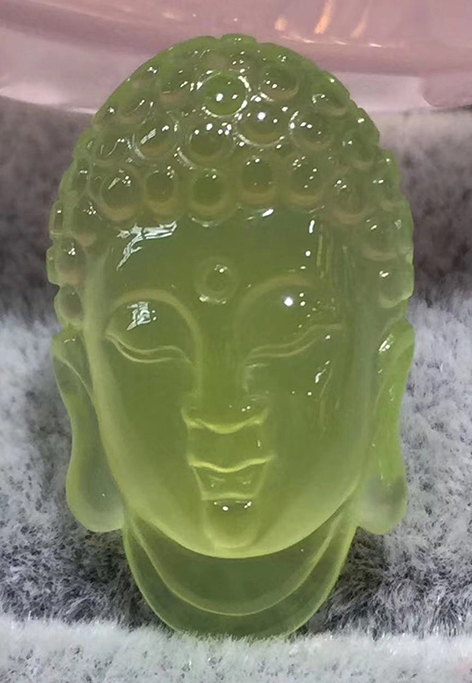
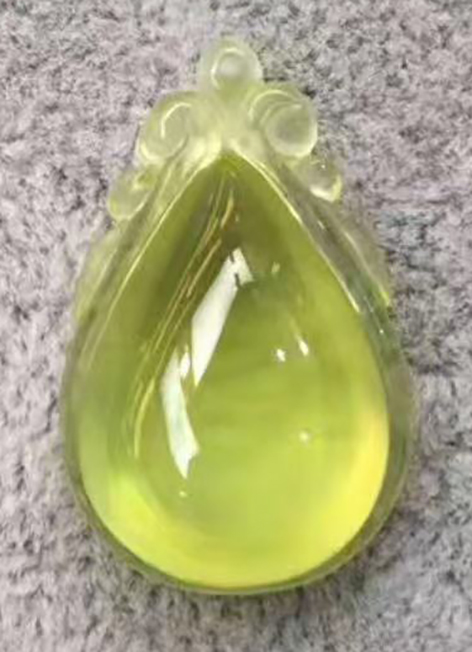
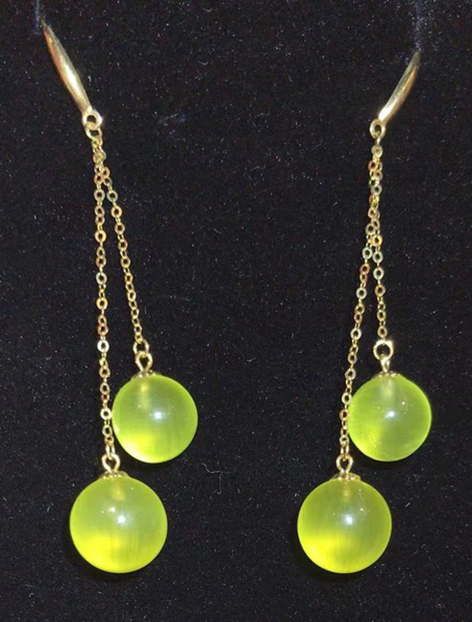





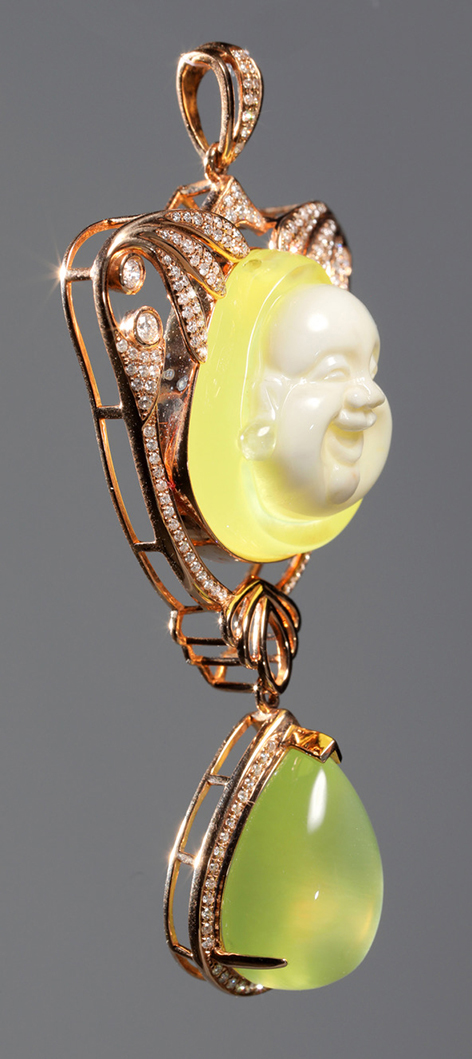

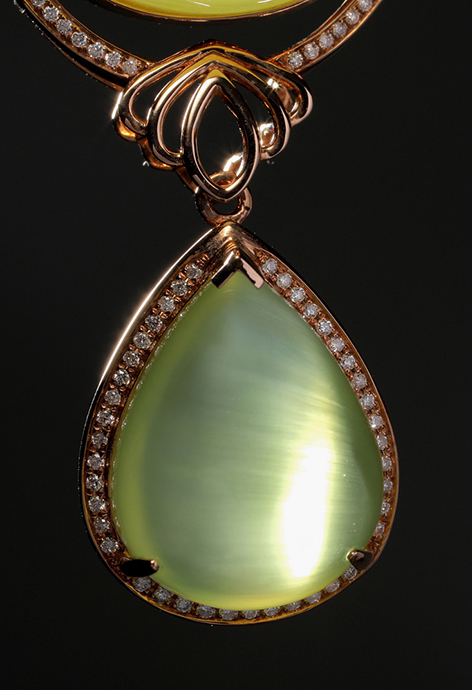

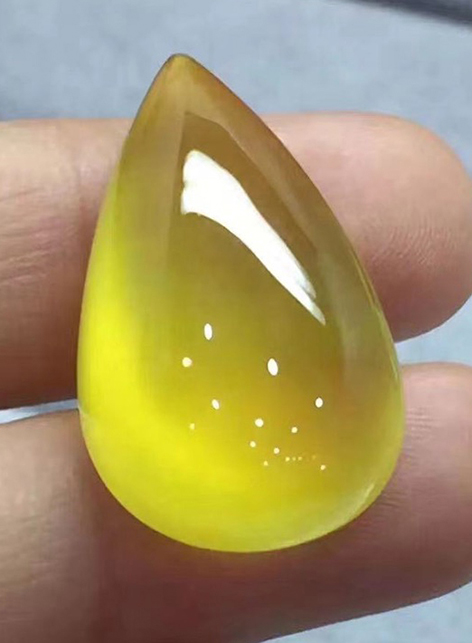
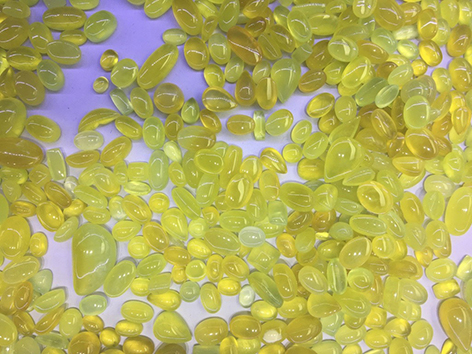
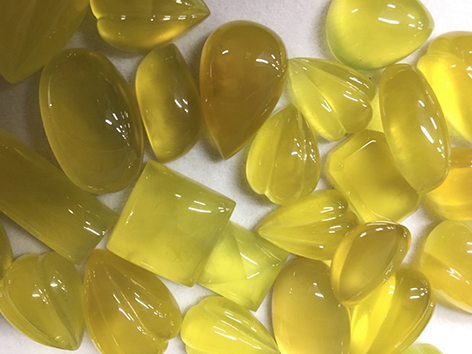
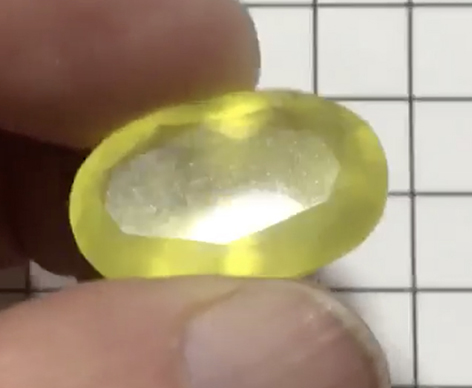 Faceted Gem
Faceted Gem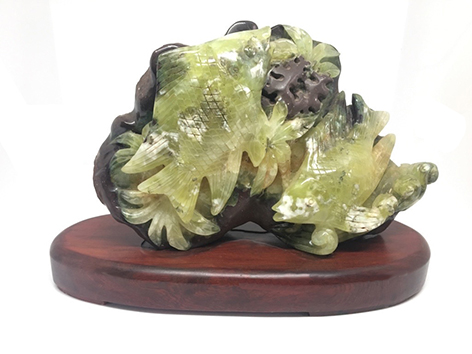 Prehnite Carving
Prehnite Carving





